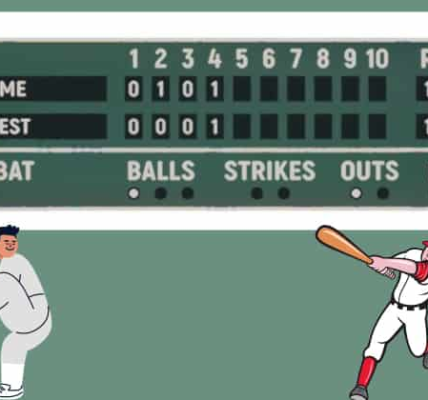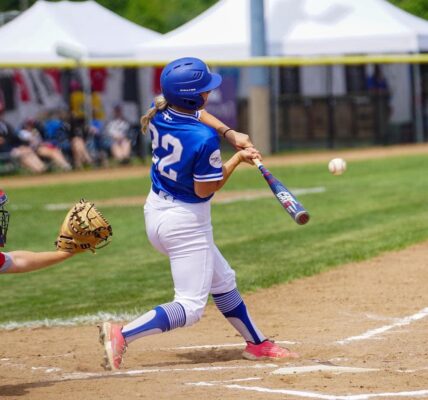The fascinating trail of baseball terminology finds its way to the alphabet ‘K’, marking a strikeout. This common baseball jargon has its roots nestled in the sanction of Henry Chadwick, a sports journalist of the bygone era. This article unravels the intriguing journey of how this lone alphabet became a symbol of a pitcher’s glory and a batter’s setback.
While exploring the terminology of baseball, it’s important to delve into why a strikeout is referred to as a ‘K’ and also understand the meaning of ‘WAR’ in baseball statistics.
Understanding a Strikeout in Baseball
A strikeout manifests when a batter records three strikes without capitalizing on the opportunity to put the ball into action. This terminology owes its existence to Henry Chadwick, a sports enthusiast and journalist from the 1850s who undertook the responsibility of recording the match’s box score. His brainchild, the K rate, or strikeout rate, determines how frequently a pitcher strikes out the batsmen by taking the total strikeouts and the number of batters faced into account.
A few noteworthy trivia about strikeouts:
- Nolan Ryan proudly holds the record for the highest number of career strikeouts;
- The trio of Roger Clemens, Kerry Wood, and Max Scherzer are the distinguished pitchers who have achieved the feat of striking out 20 batters in a 9-inning game.
Historical Interpretation of K for Strikeouts

Henry Chadwick, a sports journalist who also held the distinction of being among the first to maintain a box score of a game, was instrumental in founding the shorthand that is widely prevalent in baseball scoring even today. Being the only journalist to have his name etched in the Baseball Hall of Fame, Chadwick was left with the option of ‘K’, the last letter in ‘struck’, for recording a strikeout after he had assigned ‘S’ to denote sacrifice in his scorebook.
Over the years, the term ‘K’ has become an integral part of baseball jargon. Crowds cheer the pitcher with a roaring “K” when a batter is on two strikes, and fans display posters with a prominent “K” at the stadiums to keep a tally of a pitcher’s strikeouts.
Deciphering the Backward K
- In baseball parlance, a backward K is indicative of a batter’s failure to swing at the third and final strike of their turn;
- Also referred to as a “called” third strike, some pitchers have perfected the art of “freezing” the batter with a deceptive pitch, resulting in more backward K’s under their name.
Contrarily, a forward K suggests a batter’s unsuccessful attempt to hit the ball or a signal of a foul tip-out strikeout.
Gauging the Strikeout Rate
- Strikeout rate, represented as “K%”, is a crucial tool to gauge a pitcher’s efficiency in striking out opponents;
- It is determined by dividing the total strikeouts by the number of batters encountered, exhibited as a percentage.
Conversely, for hitters, this statistic is referred to as SO% and is calculated based on the number of times a batsman strikes out divided by their total plate appearances.
Interesting Tidbits About Strikeouts
Wondering who holds the record for the most K’s, or strikeouts, in history? Nolan Ryan leads the chart with an unmatched 5,714 career strikeouts. Only 19 players have managed to breach the 3,000 strikeouts mark, with Max Scherzer and Justin Verlander being the noted players currently playing.
Other Interesting Information:
- Reggie Jackson holds an undesirable record, having the highest number of strikeouts as a hitter with 2,597;
- Roger Clemens (2 times), Kerry Wood, and Max Scherzer are the only pitchers to have struck out 20 competitors in a 9-inning duel;
- Tony Gwynn was notoriously difficult to strike out and concluded his career with more doubles (543) than strikeouts (434);
- The record for the most consecutive batters struck out in a game is 10, a feat most recently equaled by Corbin Burnes of the Milwaukee Brewers;
- Punchouts is another term used to refer to strikeouts.
The Significance of Strikeouts in Baseball

For a pitcher, K’s or strikeouts form a vital part of their arsenal. They can assist in wriggling out of tight spots, allow efficient pitching, and induce fear in opposition players. The occurrence of strikeouts is a solid indication of a pitcher being in top form. Conversely, it implies a lonely, regretful walk back to the dugout for the batter.
Strikeouts serve as a dependable measurement tool in assessing a pitcher’s form and skill. A high strikeout rate often indicates a pitcher’s dominant control over the game and can act as a deterrent for aggressive gameplay from the opposing batters.
Being struck out can have a profound psychological impact on a batter. It can dent their confidence and affect their overall performance in subsequent games. Coaches often work with batters to help them recover swiftly from the setback and channel their focus on the forthcoming opportunities.
Conclusion
The letter ‘K’ in baseball is much more than just an initial; it embodies the very essence of the pitcher-batter face off. The journey of the ‘K’ in baseball, from its inception by a journalist in the 1850s to its current day significance, narrates a fascinating tale in sports history. It underlines a pitcher’s victory and a batter’s defeat. The intricacies it represents, from forward and backward K’s to K rates, provide an in-depth view into the technicalities of this beloved sport. Strikeouts continue to be an integral part of the game, reminding us of the ever-constant struggle between the pitcher’s desire for dominance and the batter’s quest for resilience.




